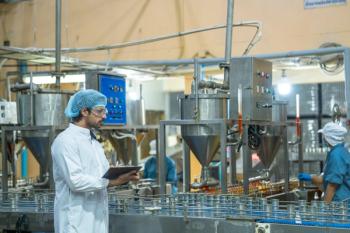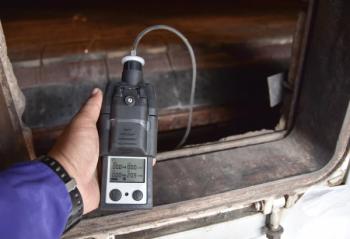
XRD, Raman, and FT-IR Spectroscopy Assist in Boosting Perovskite Solar Cells Efficiency Through Germanium Sulfide Doping
Researchers at King Saud University have successfully improved the efficiency of methylammonium lead triiodide (MAPbI3) perovskite solar cells by doping them with Germanium Sulfide (GeS). By enhancing the crystalline quality and surface morphology of the perovskite layer, the team achieved a power conversion efficiency (PCE) of 17.46%, making this doping technique a promising method for improving solar cell performance.
Perovskite solar cells (PSCs) have garnered significant attention in recent years due to their exceptional optical and electrical properties. Among the most promising materials for solar energy conversion, methylammonium lead triiodide (CH3NH3PbI3, or MAPbI3) has shown considerable potential due to its ability to absorb light, generate free charge carriers, and transport them efficiently. However, defects and suboptimal crystallization in MAPbI3 films can hinder the performance of PSCs, leading to recombination losses and reduced efficiency. To address this issue, researchers from King Saud University have investigated the impact of doping MAPbI3 with Germanium Sulfide (GeS), a semiconductor material known for its advantageous optical and electrical properties. The study, published in Optical Materials, reveals significant improvements in the structural, morphological, and photovoltaic performance of PSCs (1).
Doping with Germanium Sulfide Enhances Crystallinity
In their study, the research team—comprising E.M. Mkawi, Saif M.H. Qaid, I.S. Roqan, Y. Al-Hadeethi, and F.G. ALmehmadi—introduced small amounts of GeS during the deposition of MAPbI3 films. The addition of GeS significantly improved the crystallinity of the perovskite material, as confirmed by X-ray diffraction (XRD), Raman, and FT-IR spectroscopy. The analysis showed that doping with GeS at higher concentrations resulted in enhanced crystallization of the tetragonal perovskite structure without introducing impurities. This improvement in crystallinity is crucial for reducing charge-trap density and minimizing non-radiative recombination, both of which are key factors in optimizing solar cell efficiency (1,2).
Read More:
Improved Morphology Leads to Enhanced Performance
Beyond the crystallinity improvements, GeS doping also positively influenced the surface morphology of MAPbI3 films. Field-emission scanning electron microscopy (FESEM) revealed that the doped films exhibited larger grain sizes and a smoother, more uniform surface compared to undoped samples. These features contribute to a more compact and defect-free film, reducing current leakage and improving charge carrier mobility. The research team found that as the grain size increased, the band gap of the perovskite film also increased, further optimizing light absorption and charge transport (1).
Efficiency Gains and Optimized Device Structure
By fabricating solar cells with the structure soda-lime glass/FTO/TiO2/MAPbI3: GeS/spiro-oMeTAD/Au, the researchers achieved a maximum power conversion efficiency (PCE) of 17.46%, a notable improvement over undoped devices. The highest-performing device demonstrated a short-circuit current density (Jsc) of 22.05 mA cm−2, an open-circuit voltage (Voc) of 1.09 V, and a fill factor (FF) of 72.65%. These improvements are primarily attributed to enhanced exciton dissociation and reduced carrier recombination due to the presence of GeS particles. The team's time-resolved photoluminescence experiments confirmed that the incorporation of GeS facilitated more efficient charge separation and transfer, which contributed to the higher Jsc values (1).
Broader Implications of GeS Doping
Germanium sulfide, a layered semiconductor with anisotropic optical properties and a bandgap of 1.65 eV, has shown great promise as a dopant for improving the performance of perovskite solar cells. The electrostatic interactions between the Ge+ ions in GeS and the negatively charged Pb-I clusters in MAPbI3 alter the crystallization process, leading to a more homogeneous and defect-free perovskite film. This doping method not only enhances efficiency but also has the potential to improve the long-term stability of PSCs, a key consideration for commercial applications (1).
Conclusion:
This study marks the first time that Germanium Sulfide has been successfully incorporated into MAPbI3 perovskite solar cells to boost their performance. The researchers' findings indicate that GeS doping improves crystallinity, enhances surface morphology, and increases power conversion efficiency, with a notable PCE of 17.46%. These results suggest that GeS doping could be a valuable strategy for advancing the development of high-efficiency, stable PSCs. With further optimization, this technique could pave the way for more efficient and cost-effective solar energy solutions (1).
References
(1) Mkawi, E. M.; Qaid, S. M.; Roqan, I. S.; Al-Hadeethi, Y.; ALmehmadi, F. G.; Alamoudi, H. A.; Alreshidi, F.; Alsulaiman, S. A.; Jaafari, H. I.; Alajlani, Y.; Umar, A. Enhancement the performance of MAPbI3 Perovskite Solar Cells via Germanium Sulfide Doping. Opt. Mater. 2024, Available online 7 September 2024, 116089. DOI:
(2) Sturdza, B. K.; Gallant, B. M.; Holzhey, P.; Duijnstee, E. A.; von der Leyen, M.W.; Sansom, H. C.; Snaith, H. J.; Riede, M. K.; Nicholas, R. J. Direct Observation of Phase Transitions Between Delta-and Alpha-Phase FAPbI3 via Defocused Raman Spectroscopy. J. Mater. Chem. A 2024, 12 (9), 5406–5413. DOI:
Newsletter
Get essential updates on the latest spectroscopy technologies, regulatory standards, and best practices—subscribe today to Spectroscopy.





